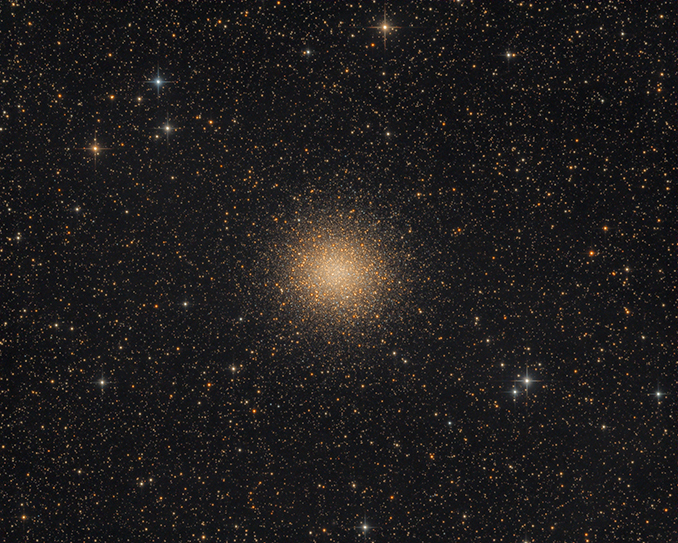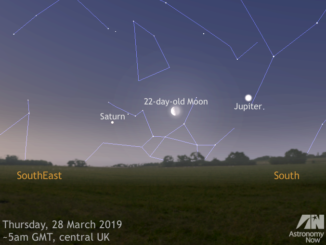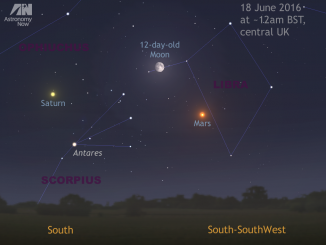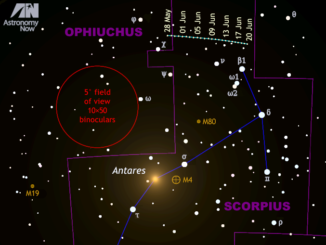
Messier 14 (NGC 6402) is one of Ophiuchus’ seven Messier-tagged globular clusters, which are incredibly dense balls of stars that can provide striking viewing. It forms a trio with and tends to be rather unfairly overshadowed by the nearby pairing of Messier 10 and Messier 12 (see Astronomy Now’s June 2021 deep-sky tour). Nevertheless, it’s easily one of the three most accessible of Ophiuchus’ crop from UK shores, and is bright enough to be readily snared through a pair of binoculars.
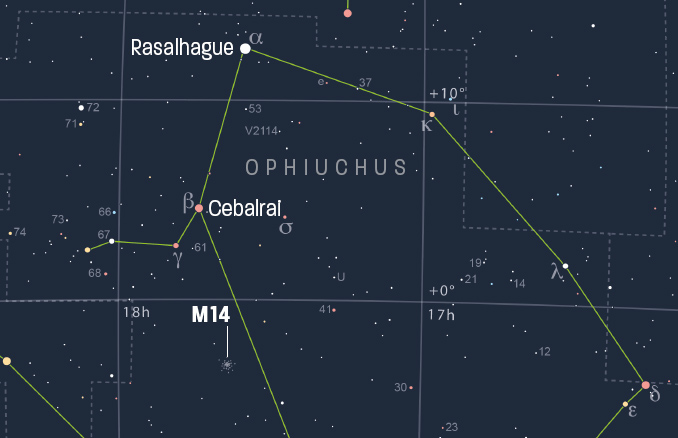
How to observe
Messier 14 lies just south of the celestial equator, which means that it peaks at a reasonable altitude of 36 degrees or so when darker skies return to the south of England in the last week of July. It’s easy to find by sweeping with a pair of 10 × 50 binoculars around eight degrees south-south-west of magnitude +2.7 Cebalrai (beta [β] Ophiuchi [Oph]), which itself lies the same distance south-south-east of magnitude +2 Rasalhague (alpha [α] Oph).
With an integrated magnitude of +7.6, Messier 14 is a magnitude or so fainter than Messier 10 and 12, and, with an apparent diameter of 12’, it’s smaller too. However, it is intrinsically quite a bit more luminous, and is also more distant than its esteemed neighbours. Messier 14’s individual stars shine relatively faintly at around fourteenth-magnitude, owing to significant dimming (reddening) from interstellar dust and gas in the plane of the Milky Way, which knocks around two magnitudes off their brightness.
Thus, Messier 14’s member stars are not easy to resolve though moderate-aperture instruments, though the globular has a rather loose class-VIII classification on the twelve-point Shapley–Sawyer system for cluster compactness. A 150mm (six-inch) telescope at high power shows some granularity, while a 250mm (ten-inch) ’scope starts to resolve the cluster’s outlying stars.
Amateur images reveal that Messier 14 sports an east–west orientated, Jupiter-like oblateness, and has a noticeably golden cast when compared with Messier 10 and 12.
